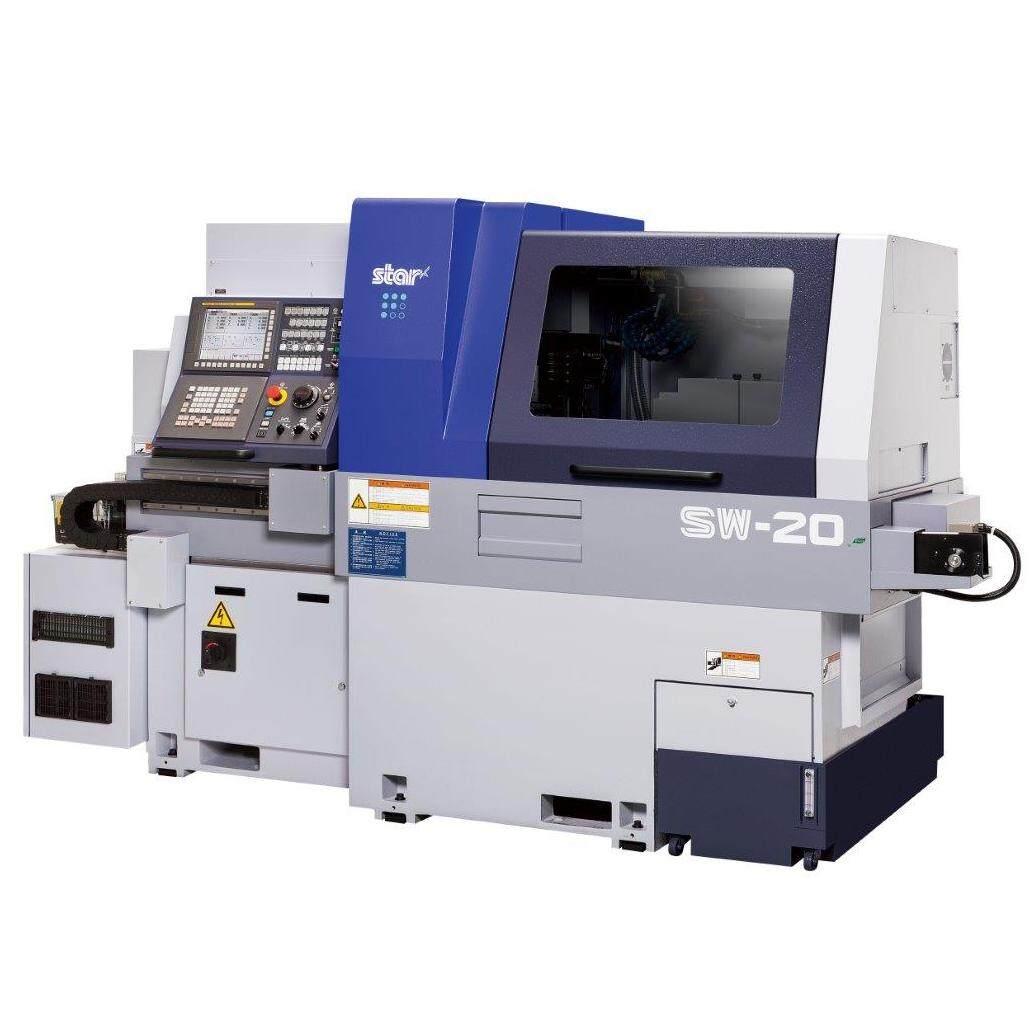Elektron pochta formatida xato
emailCannotEmpty
emailDoesExist
pwdLetterLimtTip
inconsistentPwd
pwdLetterLimtTip
inconsistentPwd

Yangiliklar
Characteristics of Swiss Lathes in the Field of Automobile Manufacturing
Swiss lathes are mainly used to process shafts, discs, sleeves, and other workpieces with rotating surfaces. They are the most widely used machine tools in machinery manufacturing, automobile manufacturing, and repair factories.
More and more small-batch customization factories realize that the multifunctional Swiss-type lathe can improve their competitiveness.

Many screw processing plants first introduced Swiss lathes when they were first introduced a few years ago. These factories originally used cam-driven screw machines to produce parts, because the equipment provided high speed, high reliability, and high capacity work efficiency. The CNC Swiss lathe adds flexibility to these factories to produce small quantities of precision turning parts.
Nowadays, many small-batch customized parts processing plants are enriching their traditional milling and turning equipment with CNC Swiss lathes. This is mainly because the machine tool can turn and mill. In this way, complex parts can be processed at one time without repeated handling on multiple machine tools.
In a typical Swiss lathe (sliding headstock), the bar stock is supported by a guide bush very close to the tool. The cutting force is absorbed by the guide sleeve to prevent workpiece deformation. This is particularly important for slender workpieces with a length to diameter ratio of more than 3:1.
Under what circumstances should a guide sleeve be used?
About 80% of the work done on the be20 machine uses the guide sleeve. Nonetheless, the chuck option offers some advantages. For example, it does not need to buy expensive, ground bar stock, which is usually required when using guide sleeves. The cost of a ground bar is four times that of a cold-drawn bar. In addition, by doing so, the utilization rate of each bar in the factory will be relatively high. When using the guide sleeve, the unused bar residue is 10In (1in=2.54cm), but when the machine tool is used as a chuck machine tool, it is only 4-5in. Most of the surplus materials are recycled, but some can also be used for the processing tasks of conventional turning centers in the factory.
Whether the guide sleeve is used or not depends on the geometric shape of the workpiece. There is no guide sleeve for machining rough and short parts. For slender parts with a length to diameter ratio greater than 3:1, the guide sleeve should be used, because the support provided to the sleeve is at the cutting point.
Although the VTD system continues to improve its Swiss-style processing technology, it also provides the following suggestions for other factories that may be considering purchasing "Swiss-style":
- It's best to start simply. Because the factory has no Swiss experience, it first bought relatively basic machines to try its hand. Be20 machine only has three tool changing stations on the main shaft, but it also has enough versatility, and it will not be too complex or difficult to deal with.
- Consider a convertible. The first task of the plant on the be20 machine does not need to use a guide sleeve unit. By allowing the machine to carry out routine turning operations, the employees in the factory can feel the ease and pleasure of dealing with Swiss-style while learning the details of the alternative processing platform.
- Realize that in fact, you can process nongrinding bar materials through the guide sleeve. At first, the factory only used ground bar stock when processing with guide sleeves. But then it found that some bar suppliers insisted that their typical cold-drawn bar had enough accuracy to pass through the guide sleeve. In addition, some guide sleeve suppliers also provide super large guide sleeves, which can accommodate slightly oversized bars after adjustment. For example, a half-inch bar may have a diameter tolerance of 0.503~0.499in. If a bar measured as 0.503in passes through a standard 0.5in guide sleeve, there may be trouble. However, it is possible to use a 0.505in guide sleeve and lower it to fit a 0.503in bar stock. This strategy can make the factory more competitive in price because of its low material cost.
- Check your compressed air supply. VTD system currently has a 15HP (1hp=0.746kw) air compressor to serve all the machines in its plant. Mr. Vilas said that he would soon upgrade it to the 25HP model because Swiss lathes often require more compressed air than other machine tools.
- Recruit potential new employees with lathe operation experience. When investigating the potential operating hours of Swiss lathes, priority should be given to those who have experience in CNC lathes rather than those who are familiar with milling machines. Those who have experience in turning are more suitable to become candidates for Swiss-style operations because they have a better sense of the orientation of the coordinate axis.
- Find a tool seller who can cooperate with you. Tool vendors vary, but it's worth identifying a company that can work hard to understand your company and its needs. By giving him a vested interest in the success of your company, he will be able to determine how to help you improve your process flow and make you a more efficient parts supplier.
- Let customers know the advantages of Swiss machine tools and their advantages in the field of automobile manufacturing.

